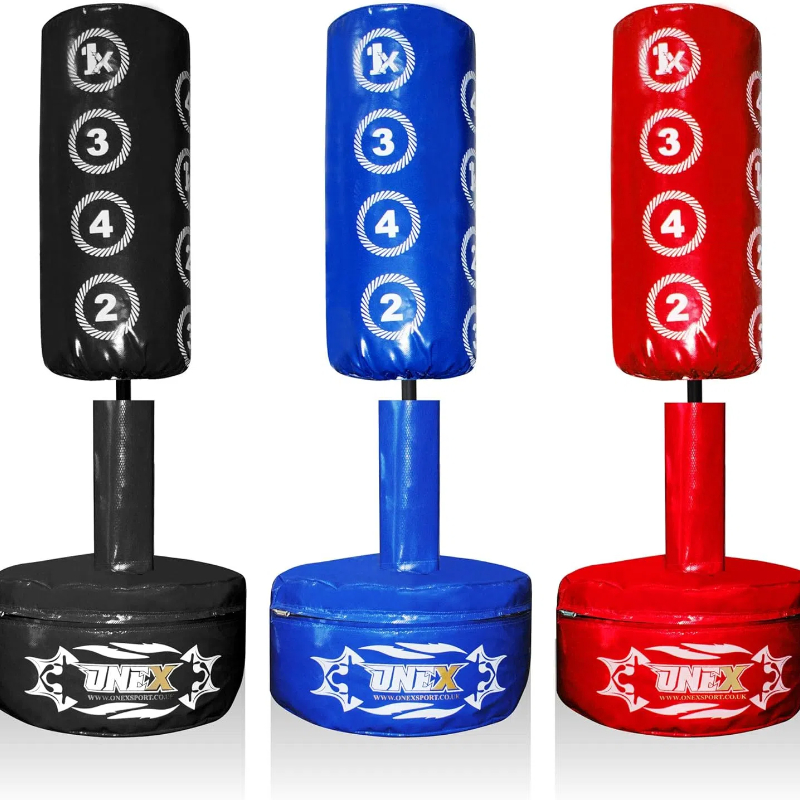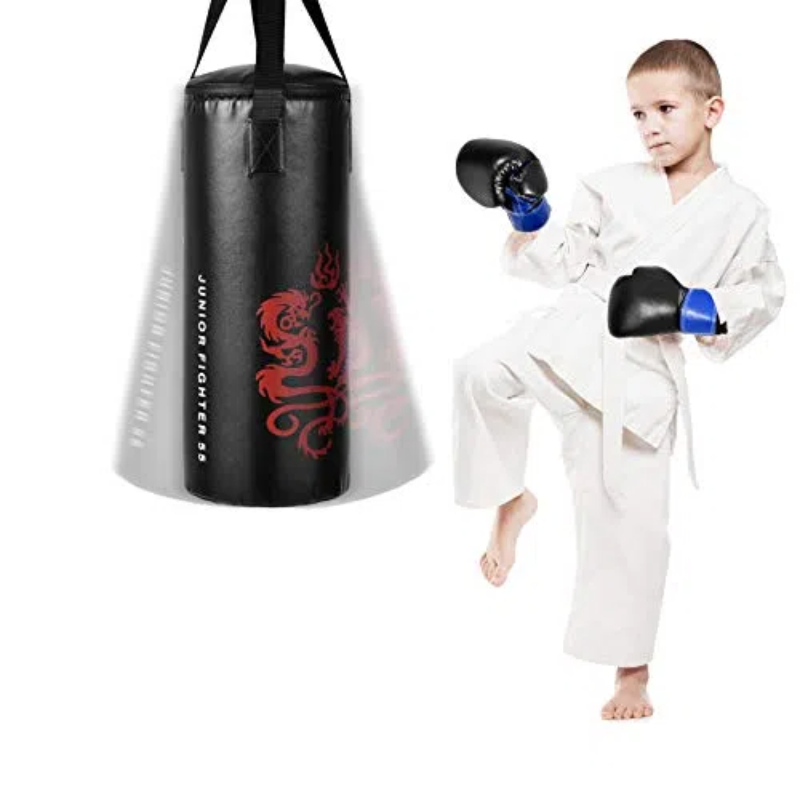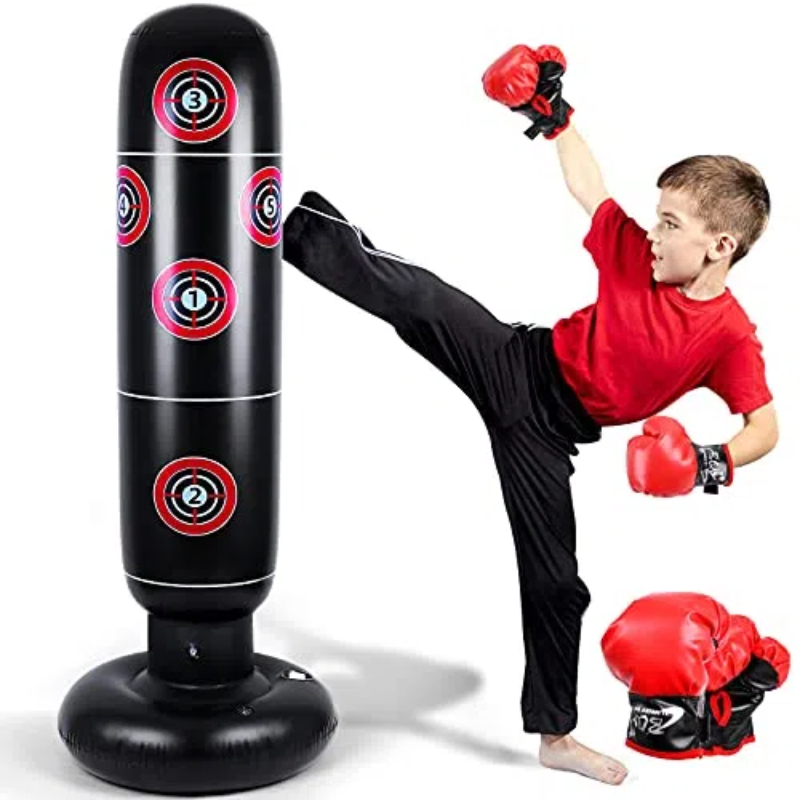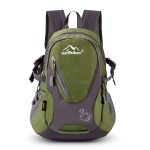Kicking bags have become a popular tool in nurturing physical activity among kids. They not only help in developing their martial arts skills but also provide a healthy outlet for their boundless energy. As a parent, choosing the right kicking bag for your child involves considering safety, durability, material, and size. This guide will help you navigate through the options to find the best kicking bags for kids, ensuring your child can safely enjoy this form of exercise and play.
Choosing Kicking Bags for Kids: What to Look For
When embarking on the journey to find a kicking bag for your child, it’s essential to know what qualities define the best kicking bags for kids. These bags should have a forgiving surface to protect little feet and hands while being sturdy enough to withstand regular use. They ought to be tailored to a child’s size and strength, which prevents strain from improper technique due to oversized and overly heavy equipment. Look for a bag with adjustable height settings, enabling it to grow as your child does.
A critical aspect of kicking bags for kids is their safety features. High-quality bags should come with a stable base that does not tip over easily, to prevent potential accidents during training sessions. Padding around the bag’s striking surface is a must to absorb impact and protect children’s joints. Some bags also include secured sand or water compartments in the base to lower the risk of sharp or hard objects being in the space where kids are most likely to kick or trip.

The Best Materials for Kicking Bags
Kicking bags for kids should be comprised of materials that are durable and easy to clean. The outer shell often consists of robust vinyl or synthetic leather, which can survive the enthusiastic sparring sessions of energetic children. Internally, a mixture of foam or fabric provides enough resistance without being too hard. These material choices ensure that kids can practice their kicks safely and parents can maintain the bag without hassle.
To keep your child engaged and motivated, it’s helpful to choose kicking bags for kids with interesting designs or those that resemble their favorite superheroes or cartoon characters. Colorful bags and those with patterns can catch the eye of children and make them more likely to stick to their training. Encouraging a child to stay active through such elements of fun will lead to a more consistent and enjoyable exercise routine.
Size and Weight: A Perfect Fit for Young Athletes
Size does matter when it comes to kicking bags for kids. A bag that is too large can be intimidating, while one that is too small may not offer an ample target. Manufacturers typically provide guidelines on the recommended age or height of the child for each bag size. Additionally, the weight is critical as heavier bags provide more resistance which might not be suitable for younger children who have not fully developed their muscles and kicking techniques.
Adjustable kicking bags for kids mean that one purchase can serve them for many years. Bags with these features can be modified in height to match the growth of your child, ensuring that it continually meets their training needs. It’s an economical choice, allowing for sustained use without the need for frequent replacements as your child grows taller.
Storage and Portability: Kicking Bags on the Move
Occasionally, you might need to move or store the kicking bag to clear space or take it to a different location. Kids’ kicking bags that are easy to deflate, fold, or disassemble provide convenience in these situations. Opt for bags that either have wheels or are light enough to move without significant effort. This portability also makes it possible to set up practice sessions anywhere, whether indoors during rainy days or outdoors when the weather is nice.

Encouraging Discipline and Exercise Through Play
Kicking bags for kids offer more than just physical benefits; they act as an engaging means of instilling discipline and a love for exercise. Through regular practice, children can learn the value of consistency and hard work while improving their motor skills and overall fitness. Kicking bags for this age group are not just about training; they are tools that promote a healthy, active lifestyle.
User Reviews: Parental Insights on Kicking Bags
Before making a purchase, it’s wise to consult reviews from other parents who have bought kicking bags for kids. Their insights can provide valuable feedback on the durability, safety, and actual use of the product beyond what is advertised. These testimonials often share personal experiences that can highlight pros and cons you might not have considered.
Integrating kicking bags into your child’s daily routine can encourage the formation of healthy habits that last a lifetime. Designing a schedule that includes specific times for practicing with the kicking bag can help children develop a routine centered around staying active. By setting short-term goals, such as mastering a new kick or improving their accuracy, kids can experience the satisfaction of achievement. This sense of progress is essential in nurturing a child’s love for physical activity and the pursuit of personal bests.
Pairing Kicking Bags with Overall Martial Arts Training
While kids may enjoy the fun aspect of kicking a bag, this activity can also be part of a more structured martial arts training regimen. Kicking bags for kids offer a practical application of the techniques learned in classes such as taekwondo, karate, or kickboxing. Using a bag helps children understand the power and form behind their kicks and punches. It presents an opportunity for them to practice without a partner, refining their skills in a controlled environment.

The Role of Kicking Bags in Developing Coordination
The repetitive motion of kicking and punching a bag enhances more than just physical strength. It serves to develop hand-eye (or foot-eye) coordination and timing in young athletes. Kicking bags for kids must be struck accurately and with proper technique to avoid falling over, teaching children to focus their energy and movements. As coordination improves, so does a child’s ability to engage in other sports and physical activities with enhanced agility and confidence.
The Social Side of Kicking Bags for Kids
Kicking bags aren’t just for solo play; they can be part of a group activity, allowing children to share their interests with friends. Whether taking turns practicing kicks or setting up friendly competitions to see who can do the most kicks in a minute, these bags can foster social interaction and teamwork. Healthy competition and mutual encouragement among peers can amplify the enjoyment of the sport, putting a social spin on what might otherwise be an individual pursuit.
Enhanced Focus and Concentration Benefits
The mental discipline required to consistently hit a kicking bag helps children improve their focus and concentration. This translates to other areas of their lives, such as studying and completing tasks with attention to detail. The concentration it takes to learn a new martial arts form or simply to maintain proper form during a series of kicks carries over to an enhanced ability to concentrate on homework and other responsibilities.
Kicking bags for kids are essential for budding martial artists to practice their techniques safely. Many parents turn to kids bags online to conveniently find a range of sporting equipment, including these durable kicking bags. While tennis bags for kids are geared toward carrying rackets and balls, kicking bags withstand the repeated impact of martial arts training. And come the holiday season, these sporting accessories could be as exciting as unwrapping christmas gift bags for kids, especially for those with a passion for active sports. Proper training equipment like kicking bags encourages youngsters to stay active and hone their skills in a fun way.
Conclusion
Kicking bags for kids can be a splendid addition to your child’s playtime and exercise routine. They can aid in the development of physical skills and instill a sense of discipline that benefits many other areas of life. When selecting the right bag, consider the aspect of safety, quality materials, appealing design, size, adjustability, and storage convenience. By keeping these factors in mind, you can ensure that the kicking bag you choose will be safe, enjoyable, and a useful tool in contributing to your child’s healthy lifestyle.


